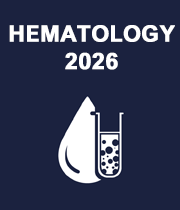Rare Hematologic Diseases
A rare disease in the United States is one that affects fewer than 200,000 people in the country. Congress established this definition in the Orphan Drug Act of 1983. Because pharma corporations were not interested in developing medicines for rare diseases, they became known as orphan diseases. The Orphan Drug Act established financial incentives for companies to discover new medicines for uncommon diseases. The definition of rare disease was required in order to determine which disorders would be eligible for the new incentive programmes. Certain cell types can be created in abnormally large quantities or in atypical forms when the usual process of blood cell growth and development breaks down. Blood malignancies and other blood problems arise as a result of this.



Title : Acute intermittent porphyria: A neurological dilemma obscured by ubiquitous fgastrointestinal presentation
Mayank Anand Singh, Mimer Medical College, India
Title : Comprehensive symptom management and supportive nursing care in a preterm toddler undergoing HSCT for pyruvate kinase deficiency
Tran Thi Dung, Vinmec International Hospital, Vietnam